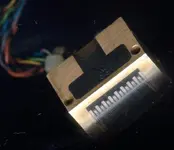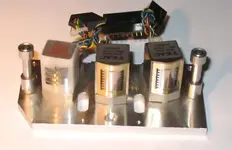evm1024
New member
At the going rate....
I'll take payment in tape! You are very kind, thank you for the complement.
Here is a final photo.
I think it is time to call it quits and perhaps tackle the other head after work tomorrow. Then back into the deck and calibrate it up. The deck might have some record problems in the form of cold solder joints but that is for another day.
Note to self: send head-stack to Ethan when due for a lap.
----
I'll take payment in tape! You are very kind, thank you for the complement.
Here is a final photo.
I think it is time to call it quits and perhaps tackle the other head after work tomorrow. Then back into the deck and calibrate it up. The deck might have some record problems in the form of cold solder joints but that is for another day.







